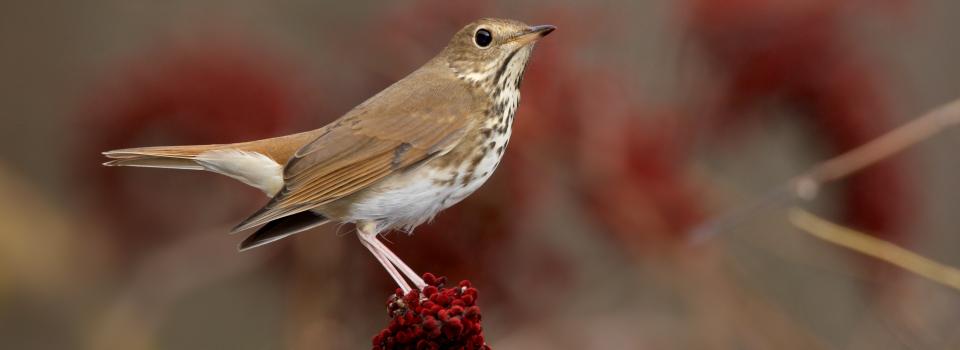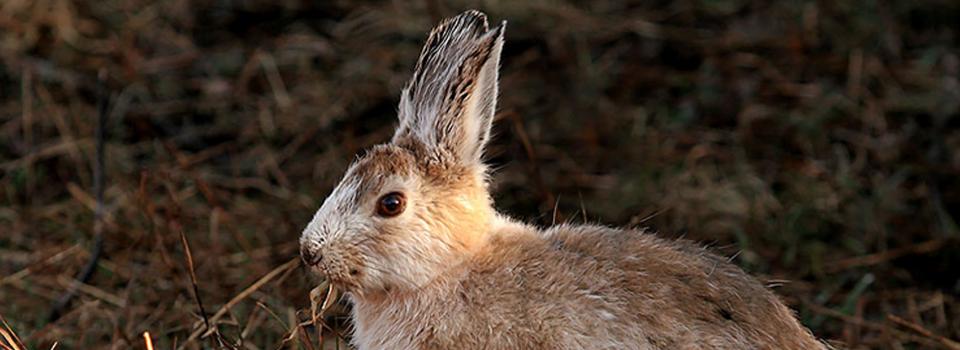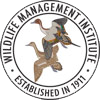
Hermit Thrush
Photo by: Robert Royse

Box Turtle
Photo by: Jonathan Mays

Snowshoe Hare
Photo by: Mike Hodgson

Timber Rattlesnake
Photo by: Kelly Wiley

Gray Seal
Photo by: Jonathan Mays








In a project extending from Maine to the Virginias, the Northeastern Association of Fish and Wildlife Agencies (NEAFWA), Manomet Center for Conservation Sciences (Manomet), and the National Wildlife Federation (NWF) are collaborating with other major northeastern stakeholders, including federal agencies and nonprofit organizations, to protect fish and wildlife and their habitats from climate change. Specifically, Manomet, NWF, and NEAFWA have embarked on a three-year effort to evaluate the vulnerabilities of the northeast’s key habitats and species, and to help increase the capabilities of state fish and wildlife agencies to respond to these challenges. This regional effort is the first of its kind in the country and is an essential step toward the implementation of effective “climate-smart” conservation of ecosystems.
Climate change is already impacting ecological resources in North America, including fish and wildlife and their habitats. These effects will become more serious and widespread as the climate continues to change, and will pose major conservation and management challenges. The overarching goal of the project is to provide vulnerability and adaptation information that will help the northeastern states to plan their conservation of fish and wildlife under a changing climate. The results will be an essential step forward in effective regional climate change conservation planning. This project has five specific objectives:
1. To quantify the vulnerabilities to climate change of fish and wildlife and their habitats across the region and thereby identify those habitats and species that are likely to be more or less vulnerable, and how these vulnerabilities vary spatially.
2. To project how these habitats and species will change their status and distributions under climate change.
3. To identify potential adaptation options (including the mitigation of non-climate stressors) that can be used to safeguard vulnerable habitats and species.
4. To identify monitoring strategies that will help track the onset of climate change and the success, or otherwise, of adaptation actions.
5. To work with states to increase their institutional knowledge and capabilities to respond to climate change through educational and planning workshops and other events.
UPDATE (September 2014)
Three final reports were recently revised through additional funding from the North Atlantic LCC. The final reports are available for download below:
Climate Change and Cold Water Fish Habitat in the Northeast: A Vulnerability Assessment;
The Vulnerability of Fish and Wildlife Habitats in the Northeast to Climate Change; and
The Vulnerability of Northeastern Fish and Wildlife Habitats to Sea Level Rise.
The NEAFWA Habitat Vulnerability Assessment Model is now being used by 6 states to complete their state vulnerability assessments. In addition, the model has been used as an important component of training courses for Federal and NGO practitioners in vulnerability assessment.
Name: Dr. Hector Galbraith
Title: Director, Climate Change Initiative
Organization: Manomet Center for Conservation Sciences
Email: hg2@hughes.net
Address: 837 Camp Arden Road, Dummerston, VT 05301
Phone: 802-258-4836
Name: Curtis Fisher
Title: Regional Executive Director, Northeast Natural Resource Center
Organization: National Wildlife Federation

© 2020 A Wildlife Management Institute Project